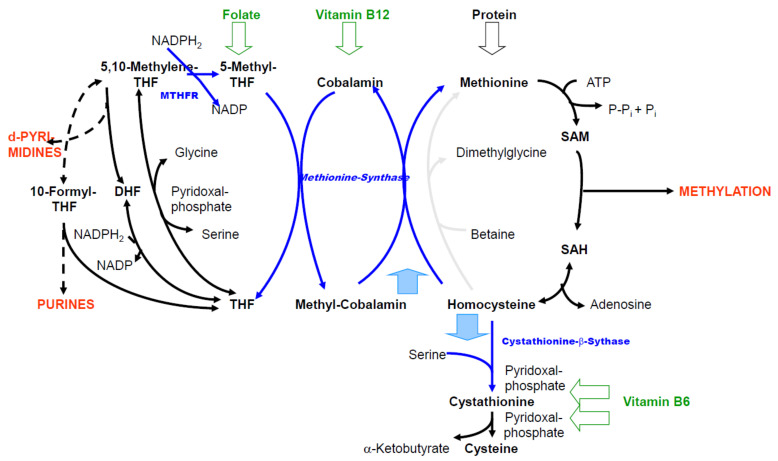Figure 1.
All essential reactions of the C1 metabolism: On the left side, the folic acid cycle is depicted, showing formyl and methenyl groups bound to tetrahydrofolate (THF), which is involved in purine synthesis (DNA, RNA), and methylene, involved in deoxythymidylate synthesis (DNA) and methyl groups that are required for the re-methylation of homocysteine (HCys) to methionine. On the right side, the methylation cycle is illustrated, including S-adenosylmethionine (SAM) methylations: nucleic acids, proteins, phospholipids, neurotransmitters, hormones, creatine and others. Histone protein, DNA and RNA methylations cause epigenetic regulation [1,2]. The vast majority of methylations originate from SAM [3]. More than 200 SAM-dependent methyltransferases are encoded in the human genome [4]. Red: products, intermediate reactions are omitted (dashed arrows); blue: reactions with enzymes for which genetic defects frequently occur or which catalyze reactions that can be reduced; green: necessary B-vitamins that cannot replace each other. The reaction catalyzed by methionine synthase needs two vitamins as cofactors at the same time; two light blue arrows: re-methylation of HCys (upwards), transsulfuration of HCys (downwards); MTHFR: 5,10-methylene tetrahydrofolate reductase, THF: tetrahydrofolate, DHF: dihydrofolate, SAM: S-adenosyl methionine, SAH: S-adenosyl homocysteine.

